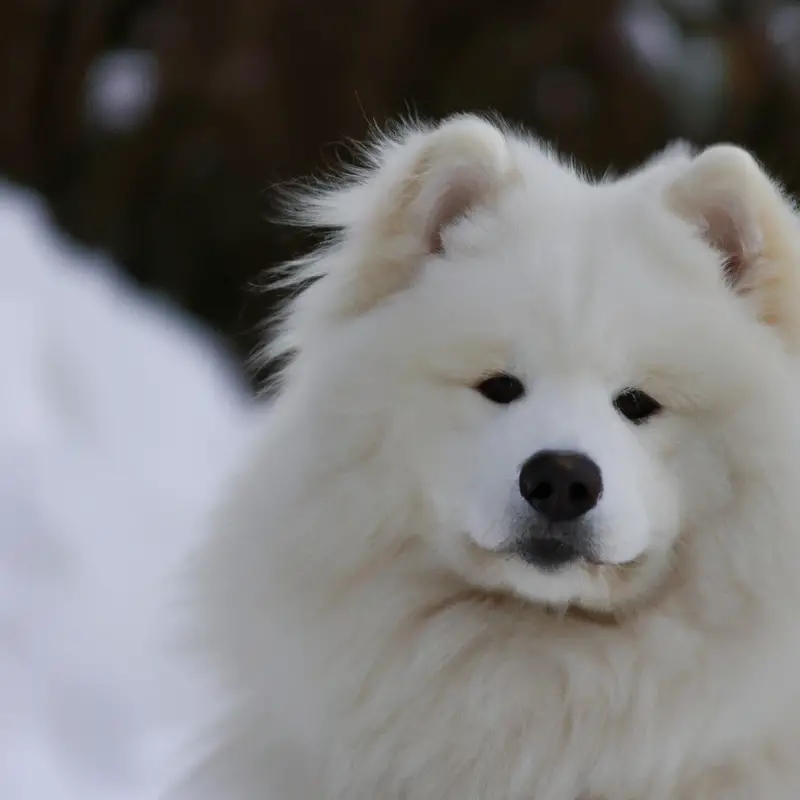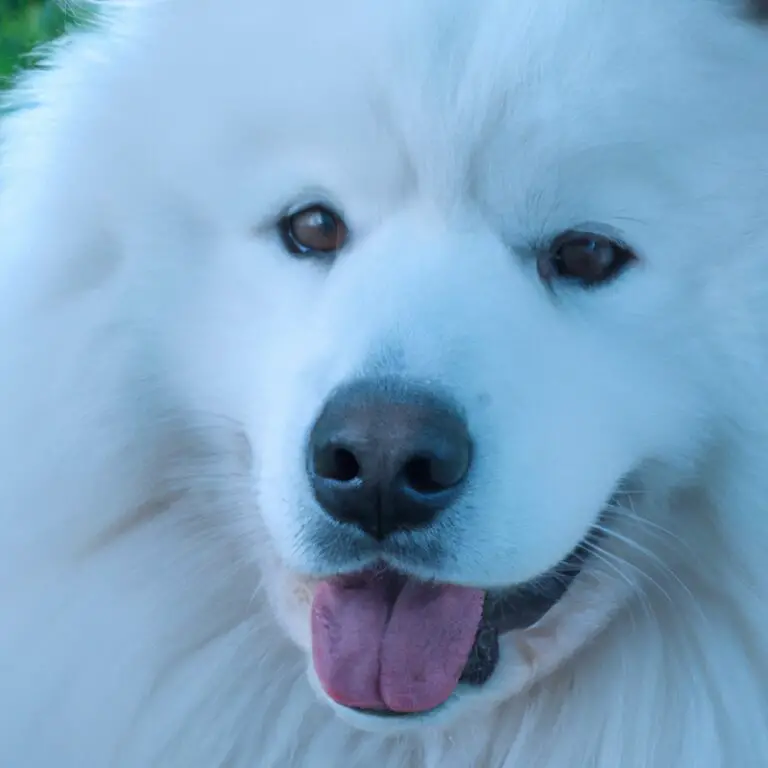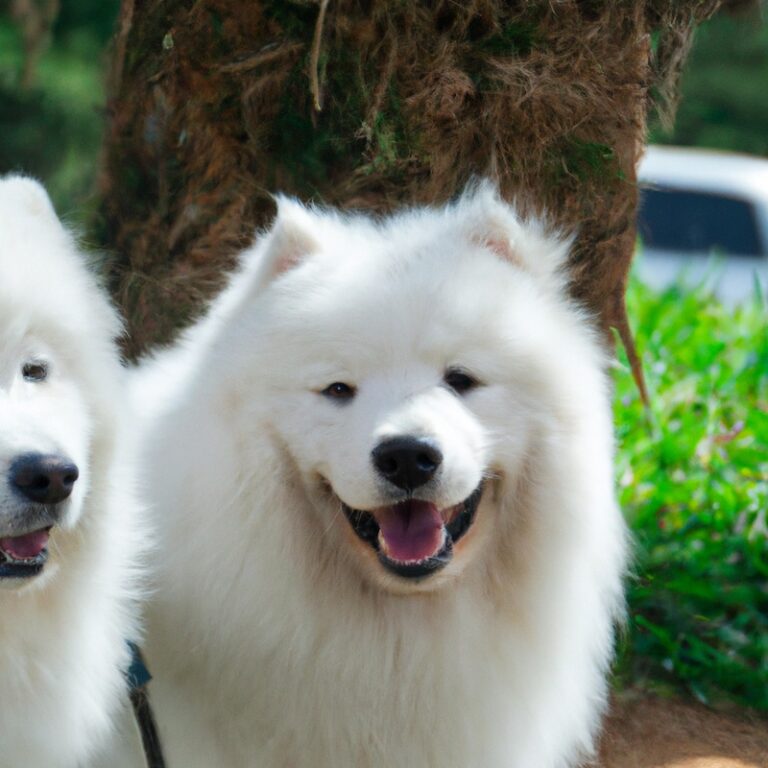How To Train a Samoyed Puppy?
Key Takeaways:
- Start potty training early and be consistent.
- Provide plenty of mental and physical exercise.
- Use positive reinforcement during training sessions.
- Socialize your Samoyed puppy from an early age.
Are you ready to embark on a magical journey of training a Samoyed puppy?
These cute and fluffy furballs are not only beautiful but also intelligent and eager to please.
But before we delve into the nitty-gritty of training techniques, let’s take a moment to understand the Samoyed breed.
From their fascinating history and endearing characteristics to their unique temperament and behavior traits, I will guide you through the basics of training your Samoyed puppy.
So, grab a cup of coffee, sit back, and let’s explore the wonderful world of Samoyed puppy training together!
| Step | Description |
| 1 | Start with basic obedience training such as “sit”, “stay”, and “come”. Use positive reinforcement methods like treats and praise. |
| 2 | Focus on socialization by exposing the puppy to different environments, people, and other animals. This helps them become more confident and well-behaved. |
| 3 | Teach leash walking using a harness or collar. Start with short walks and gradually increase the duration and distance. |
| 4 | Potty train your Samoyed puppy by establishing a routine, taking them to the same spot outside, and rewarding them when they eliminate in the appropriate area. |
| 5 | Introduce crate training to provide a safe and comfortable space for your puppy. Use positive reinforcement to encourage them to enter and stay in the crate. |
| 6 | Train them to be well-behaved around other animals and people by gradually introducing them to new situations and rewarding good behavior. |
| 7 | Teach basic commands like “leave it”, “drop it”, and “stay” to ensure their safety and cooperation in various situations. |
| 8 | Continue training sessions regularly to reinforce what your Samoyed puppy has learned and to introduce more advanced obedience and agility exercises. |
| 9 | Seek professional help if needed, such as enrolling in puppy training classes or hiring a dog trainer, to address specific issues or enhance training techniques. |
| 10 | Provide mental stimulation through interactive toys, puzzles, and games to keep your Samoyed puppy engaged and prevent boredom. |
Understanding the Samoyed breed
History and characteristics of Samoyed dogs
Samoyed dogs have a rich history and distinct characteristics that make them a popular breed. Originating from Siberia, they were used by the Samoyede people for herding reindeer and pulling sleds.
These dogs were also employed as companions and guardians.
Samoyeds have a friendly and gentle nature, making them great family pets. They are known for their beautiful white coats, cheerful expressions, and their famous “Sammy smile.” With their high intelligence and eagerness to please, Samoyeds are relatively easy to train and excel in activities such as obedience and agility.
Their loving and sociable nature makes them a beloved addition to any household.
Temperament and behavior traits of Samoyed puppies
Samoyed puppies are known for their friendly and outgoing nature.
They are generally affectionate, gentle, and good-natured.
They love being around people and are great with children.
However, they can also be quite stubborn and independent at times.
Samoyed puppies require consistent and firm training from an early age to prevent any behavioral issues.
Proper socialization is essential to ensure they are well-rounded dogs.
Daily exercise is crucial for these energetic puppies to prevent boredom and destructive behavior.
Patience and positive reinforcement are key when training a Samoyed puppy.
Basics of Samoyed puppy training
Importance of early socialization and exposure
Early socialization and exposure are vital for a Samoyed puppy’s development. It helps them become well-adjusted and confident adults.
By exposing them to different people, animals, and environments, you can prevent fear-based behaviors and aggression later on.
Socialization also helps them learn how to communicate and interact appropriately. Introduce them to various sights, sounds, and experiences to ensure they grow up to be happy and well-rounded dogs.
Remember, the earlier you start, the better!

Establishing a daily routine for your Samoyed puppy
To establish a daily routine for your Samoyed puppy, start by setting a consistent schedule for meals, exercise, and bathroom breaks.
This will help them develop good habits and ensure they get the care they need.
Additionally, include regular playtime and training sessions to stimulate their minds and promote socialization.
Don’t forget to provide them with a comfortable and quiet space for rest and relaxation.
Stick to the routine as much as possible to provide stability and structure for your furry friend.
House training a Samoyed puppy
Crate training as a method for house training
Crate training is an effective method for house training your Samoyed puppy. It provides a safe and secure space where your puppy can rest and learn to control their bladder and bowels.
Here’s how to do it:
- Choose the right crate: Make sure the crate is large enough for your Samoyed to stand, turn around, and lie down comfortably.
- Introduce the crate gradually: Encourage your puppy to explore the crate by placing treats and toys inside. Make it a positive and rewarding experience.
- Use positive reinforcement: Reward your puppy for entering the crate and staying inside. Start with short periods and gradually increase the time.
- Establish a routine: Take your puppy outside to eliminate after waking up, eating, playing, and before going into the crate. This helps them associate the crate with relaxation and not elimination.
- Never use the crate as punishment: The crate should be a positive and comfortable space for your puppy. Never use it as a form of punishment.
Remember, with consistency, patience, and positive reinforcement, crate training can be an effective method for house training your Samoyed puppy.
Using positive reinforcement for successful house training
Using positive reinforcement is vital for successful house training. It is a proven method that focuses on rewarding your Samoyed puppy for desired behaviors, such as going potty outside.
Here’s how you can do it:
- Create a reward system: Use treats, praise, or playtime as rewards for your puppy when they eliminate outside.
- Be consistent: Take your puppy to the designated potty area regularly and immediately after waking up, eating, or playing.
- Keep an eye out: Watch for signs that your puppy needs to go, like sniffing or circling, and take them outside right away.
- Timing is key: Reward your puppy immediately after they finish eliminating outside, so they associate the reward with the desired behavior.
- Patience is key: Accidents may happen, but never scold or punish your puppy. Instead, clean up the mess without drawing attention to it.
- Stick to a routine: Establishing a consistent schedule helps your puppy understand when and where they should go potty.
- Use positive verbal cues: Use a specific word or phrase, like “go potty,” while your puppy is eliminating to reinforce the desired behavior.
- Be observant: Pay attention to your puppy’s behavior and body language to anticipate their needs.
- Gradual independence: As your puppy becomes more reliable, gradually give them more freedom in the house, under supervision.
- Celebrate progress: Celebrate each milestone and progress your puppy makes, reinforcing the positive association with house training.
Remember, consistency and positive reinforcement are key to successful house training with your Samoyed puppy. Stay patient, and you’ll have a well-trained and happy pup in no time!
Obedience training for Samoyed puppies
Teaching basic commands like sit, stay, and come
To teach your Samoyed puppy basic commands like sit, stay, and come, consistency is key.
Start by using positive reinforcement, rewarding your puppy with treats and praise when they successfully follow a command.
Use a clear, firm tone of voice and hand gestures to accompany the verbal commands.
Break down each command into small steps and practice them regularly in short training sessions.
Be patient and remember to keep the training sessions fun and engaging for your puppy.
Eventually, they will understand and respond to these basic commands.
Implementing reward-based training techniques
Reward-based training techniques are highly effective for Samoyed puppies.
Instead of using punishment or force, these techniques focus on positive reinforcement.
When implementing reward-based training, you should:
- Use treats or praise as a reward for desirable behaviors.
- Consistently reinforce good behavior immediately after it occurs.
- Be patient and consistent in your training approach.
- Use a clicker or a verbal marker to signal the desired behavior.
- Gradually fade out the use of treats as your puppy becomes more proficient in the desired behavior.
By using reward-based training techniques, you can build a strong bond with your Samoyed puppy and encourage them to learn and obey commands willingly.
Leash training and walking etiquette for Samoyed puppies
Introducing a leash and collar properly
To introduce a leash and collar properly to your Samoyed puppy, start by choosing a lightweight and adjustable collar that fits snugly but comfortably around their neck.
Attach the leash to the collar and allow your puppy to explore it at their own pace.
Make sure the leash isn’t too long to prevent tangles or tripping.
Encourage positive associations by rewarding your puppy with treats or praise when they wear the collar and leash without resistance.
Gradually increase the duration and intensity of leash training sessions over time.
Patience and consistency are key.

Teaching proper leash behavior and walking etiquette
Teaching your Samoyed puppy proper leash behavior and walking etiquette is important for both their safety and the enjoyment of your walks together.
Here are a few tips to get you started:
1. Start with basic leash training indoors, using positive reinforcement to reward your puppy for walking calmly beside you. Use treats or praise to reinforce good behavior.
- Gradually introduce short outdoor walks, focusing on loose leash walking. Encourage your puppy to stay close to you without pulling or lunging. Again, reward them for good behavior.
- Practice patience and consistency. Leash training takes time, so be patient and consistent with your training efforts. Consistency is key for your puppy to understand what is expected of them.
- Set boundaries and use corrective measures when necessary. Use a firm “no” and gentle leash correction if your puppy starts pulling or misbehaving. This will help them understand what is acceptable behavior.
- Socialize your puppy. Expose them to different environments, people, and other dogs to help them become comfortable and well-behaved during walks and encounters.
Remember, training your Samoyed puppy is a continuous process.
Keep reinforcing good behavior and addressing any issues that may arise.
With consistent effort, your pup will learn proper leash behavior and walking etiquette.

Dealing with common behavior issues in Samoyed puppies
Biting and chewing: how to address these behaviors
Biting and chewing are common behaviors in Samoyed puppies that can be addressed through consistent training. Here’s what you can do:
- Provide appropriate chew toys to redirect their chewing behavior.
- Use positive reinforcement techniques by rewarding good behavior and redirecting them when they exhibit inappropriate biting or chewing.
- Avoid using punishment or negative reinforcement, as it may worsen the behavior.
- Be consistent in your training approach and set clear boundaries.
- Ensure they get enough physical and mental exercise to prevent boredom.
Remember, training takes time and patience. With consistent effort, you can help your Samoyed puppy learn appropriate behaviors.
Excessive barking: tips for reducing barking
Excessive barking can be a frustrating behavior in Samoyed puppies, but there are effective ways to address it. Firstly, ensure that your puppy is getting enough physical and mental exercise to prevent boredom and excess energy.
Secondly, consider using positive reinforcement techniques to reward your puppy for calm behavior and redirect their attention when they start barking excessively.
Thirdly, provide your puppy with interactive toys or puzzles to keep them occupied. Remember to be patient and consistent in your training efforts.
With time and consistency, you can reduce excessive barking in your Samoyed puppy.
Advanced training for Samoyed puppies
Teaching more complex commands and tricks
Teaching more complex commands and tricks to your Samoyed puppy can be a lot of fun! Here are a few tips to help you out:
- Start with a strong foundation: Make sure your puppy has mastered the basics before moving on to more advanced commands. This includes commands like sit, stay, and come.
- Break it down: Complex commands can sometimes be overwhelming for puppies. Break them down into smaller, more manageable steps. For example, if you want to teach your puppy to roll over, start by teaching them to lie down, then gradually introduce the rolling motion.
- Use positive reinforcement: Reward your puppy with treats, praise, and play whenever they successfully complete a complex command or trick. This will encourage them to continue learning and trying new things.
- Be patient: Remember, puppies have short attention spans. Take it slow and be patient with your furry friend. With consistent practice and positive reinforcement, they will eventually master the more complex commands and tricks.
- Practice regularly: Consistency is key when it comes to training. Set aside regular, dedicated training sessions with your puppy to work on the more advanced commands and tricks. The more you practice, the quicker they will learn.
- Keep it fun: Training should be an enjoyable experience for both you and your puppy. Use toys, games, and plenty of enthusiasm to make the learning process engaging and exciting.
Agility training and other advanced activities
Agility training is a fantastic way to challenge and engage your Samoyed puppy. It involves teaching your pup to navigate through an obstacle course, including jumps, tunnels, and weave poles.
By incorporating agility training into your routine, you can enhance your pup’s physical abilities, increase their mental stimulation, and strengthen your bond with them.
Other advanced activities you can try with your Samoyed include obedience trials, advanced trick training, and canine sports like flyball or dock diving. These activities not only provide mental and physical stimulation but also help to build confidence in your pup.
Just remember to start slowly, be patient, and have fun with your furry friend!
Frequently Asked Questions about Samoyed puppy training
How long does it take to train a Samoyed puppy?
Training a Samoyed puppy can vary in duration depending on various factors such as consistency, motivation, and the individual dog’s personality. On average, it could take anywhere from a few weeks to several months to train a Samoyed puppy.
However, keep in mind that training is an ongoing process that continues throughout their lifetime.
Patience, positive reinforcement, and regular practice are key to successfully training your Samoyed puppy. Remember to start early and be consistent with your training efforts for the best results.
Is it necessary to hire a professional trainer?
No, it is not always necessary to hire a professional trainer for your Samoyed puppy.
With consistent effort and proper guidance, you can train your puppy yourself.
There are many resources available, such as books, online tutorials, and training classes, that can help you effectively train your Samoyed.
However, if you are facing specific challenges or if you prefer personalized guidance, hiring a professional trainer can be beneficial.
Ultimately, the decision to hire a professional trainer depends on your individual needs and preferences.
Final Verdict
Training a Samoyed puppy requires patience, consistency, and positive reinforcement. Understanding the breed’s history, characteristics, and temperament is vital for effective training.
Early socialization and exposure are crucial for developing a well-rounded and confident Samoyed.
Establishing a daily routine helps create structure and discipline. When it comes to house training, crate training and positive reinforcement techniques yield the best results.
Obedience training should focus on teaching basic commands using reward-based methods.
Leash training requires introducing the leash and collar properly, and teaching proper walking etiquette. Addressing common behavior issues such as biting and excessive barking requires consistency and redirection.
Advanced training can include teaching more complex commands and engaging in agility activities.
Finally, when it comes to training a Samoyed puppy, it’s important to invest time and effort rather than relying on quick fixes. Hiring a professional trainer can be beneficial but is not always necessary.
With dedication and the right approach, you can have a well-trained and well-behaved Samoyed puppy.







